Apple iPhone 4S: Thoroughly Reviewed
by Anand Lal Shimpi & Brian Klug on October 31, 2011 7:45 PM EST- Posted in
- Smartphones
- Apple
- Mobile
- iPhone
- iPhone 4S
History loves to repeat itself, and even Apple isn’t immune to the yearly cycle of rumor and release. Leading to each year’s iPhone refresh, excitement, rumors, and hype build to a fever pitch, features and designs are added into an increasingly unrealistic combination, and finally everyone is silenced at the device’s eventual unveiling.
Today we’re looking at Apple’s latest iPhone refresh, the iPhone 4S (henceforth just 4S).
The review has to start somewhere, and the path of least resistance is usually just exterior appearances - in this case the 4S is easy to go over. The 4S keeps the overall form factor and design of its predecessor, but to call it identical to the iPhone 4 isn’t entirely correct. Instead, the 4S borrows its stainless steel band break locations from the CDMA iPhone 4, which we talked about extensively when it finally released. The GSM/UMTS iPhone 4 previously had three notches, where the CDMA iPhone 4 and 4S have a total of four.
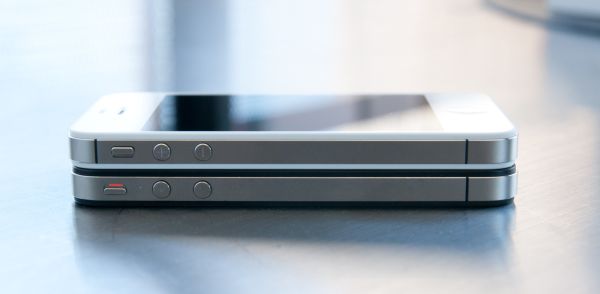
Top: iPhone 4S, Bottom: iPhone 4
The long and short of this change is that the notches have been moved around to accommodate a design with two cellular antennas. One is up at the very top, the other is at the very bottom - the two are the small U shaped portions. The result of this change is that the 4S has a very symmetrical design, as opposed to the GSM/UMTS 4’s asymmetric layout.
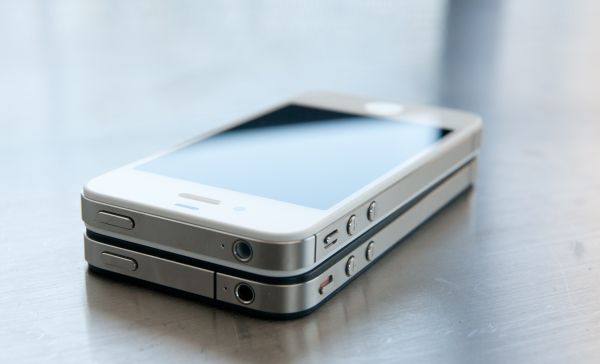 Top: iPhone 4S, Bottom: iPhone 4
Top: iPhone 4S, Bottom: iPhone 4
Just like the CDMA iPhone 4, the 4S also moves the vibrate/lock switch down the device just slightly to accommodate the new break for the top antenna band. This is the physical change that breaks compatibility with cases designed for the older GSM/UMTS iPhone 4. If you recall previously, however, Apple refreshed its bumpers with a new “Universal” line around the time of the CDMA iPhone 4 launch. At that time, case makers also followed suit with a larger vibrate/lock switch port. The result is that if you have a “universal” case created after the launch of the CDMA iPhone 4, you likely won’t need a new one for the 4S.
I say likely because some cases that cover the front of the 4S and are universal might not work as well owing to a small change in the placement of the 4S’ ambient light sensor. It’s going to be a case by case basis to determine which 4 cases that cover the front of the display work with the 4S.
The rest of the 4S exterior is superficially identical to its predecessor, which has become something of a point of contention for shoppers who like being able to identify themselves as owning a 4S, as opposed to a 4. There are, however, subtle differences you can leverage to tell the 4S from its two 4 brethren. The 4S includes the regulatory (FCC, recycling, European Conformity, e.t.c.) logos below its model numbers and FCC ID. The CDMA 4 doesn’t include those logos. Again, the GSM/UMTS 4 is alone with its three-notch stainless steel bands. It is admittedly curious that Apple hasn’t decided to make some other larger change to distinguish the 4S from the other two - there’s no mention of 4S anywhere on the phone. The iPhone 3G and 3GS were famously distinguished from each other by the inclusion of chrome iconography on the back. I fully expect Apple to update their identifying iPhone page with basically the above information at some point in time, but to say that the 4S is identical to the previous device is disingenuous.
The 4S design is without a doubt, however, an evolution of the CDMA iPhone 4’s design. Like the latter, the 4S includes the same improved vibration unit instead of the counterweight vibrator that most smartphones include. The result is a virtually silent, completely smooth vibrate, instead of the louder rattle and sharp acceleration that accompanies the counterweight vibration. The result is much less conversation-interrupting noise when the 4S vibrates during a call, and less intrusive notification.
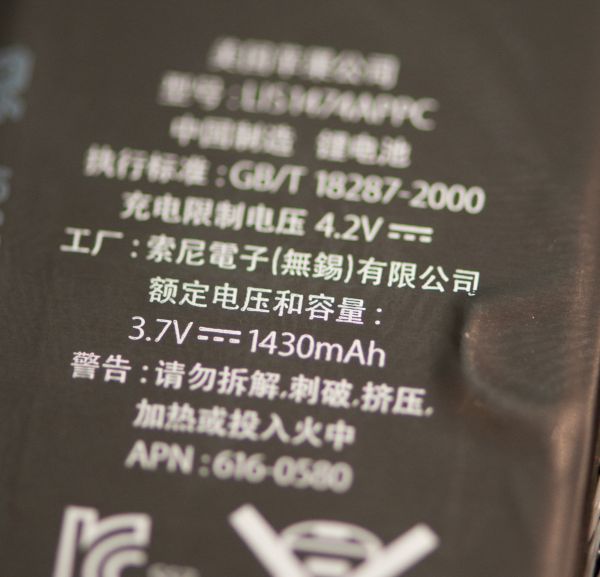
Battery capacity up to 1430 mAh
The other subtle change is an extremely small jump in battery capacity, from 1420 mAh in the 4 to 1430 mAh in the 4S. This is a very small change that boosts the capacity in watt-hours from 5.25 to 5.3. In addition the 4S puts on a little bit of weight, from 137 to 140 grams, but again nothing major.
Even the 4S packaging is basically the same as prior versions, including the same design and contents. Inside you get the phone, dock cable, headset mic, and the same smaller 5V, 1A charger that came with the 4.
| Physical Comparison | |||||||
| Apple iPhone 4 | Apple iPhone 4S | HTC Sensation | Samsung Galaxy Nexus | Samsung Galaxy S 2 | |||
| Height | 115.2 mm (4.5") | 115.2 mm (4.5") | 126.3 mm (4.97") | 135.5 mm | 125.3 mm (4.93") | ||
| Width | 58.6 mm (2.31") | 58.6 mm (2.31") | 65.5 mm (2.58") | 67.9 mm | 66.1 mm (2.60") | ||
| Depth | 9.3 mm ( 0.37") | 9.3 mm ( 0.37") | 11.6 mm (0.46") | 8.94 mm | 8.49 mm (0.33") | ||
| Weight | 137 g (4.8 oz) | 140 g (4.9 oz) | 148 g (5.22 oz) | 135 g | 115 g (4.06 oz) | ||
| CPU | Apple A4 @ ~800MHz Cortex A8 | Apple A5 @ ~800MHz Dual Core Cortex A9 | 1.2 GHz Dual Core Snapdragon MSM8260 | 1.2 GHz TI OMAP 4460 Dual Core Cortex A9 | 1.2 GHz Exynos 4210 Dual Core Cortex A9 | ||
| GPU | PowerVR SGX 535 | PowerVR SGX 543MP2 | Adreno 220 | PowerVR SGX 540 | ARM Mali-400 | ||
| RAM | 512MB LPDDR1-400 | 512MB LPDDR2-800 | 768 MB LPDDR2 | 1GB LPDDR2 | 1 GB LPDDR2 | ||
| NAND | 16GB or 32GB integrated | 16GB, 32GB or 64GB integrated | 4 GB NAND with 8 GB microSD Class 4 preinstalled | 16GB or 32GB NAND integrated | 16 GB NAND with up to 32 GB microSD | ||
| Camera | 5MP with LED Flash + Front Facing Camera | 8MP with LED Flash + Front Facing Camera | 8 MP AF/Dual LED flash, VGA front facing | 5 MP AF with LED flash, 1.3MP front facing | 8 MP AF/LED flash, 2 MP front facing | ||
| Screen | 3.5" 640 x 960 LED backlit LCD | 3.5" 640 x 960 LED backlit LCD | 4.3" 960 x 540 S-LCD | 4.65" 1280 x 720 Super AMOLED | 4.27" 800 x 480 SAMOLED+ | ||
| Battery | Integrated 5.254Whr | Integrated 5.291Whr | Removable 5.62 Whr | Removable 6.475 Whr | Removable 6.11 Whr | ||


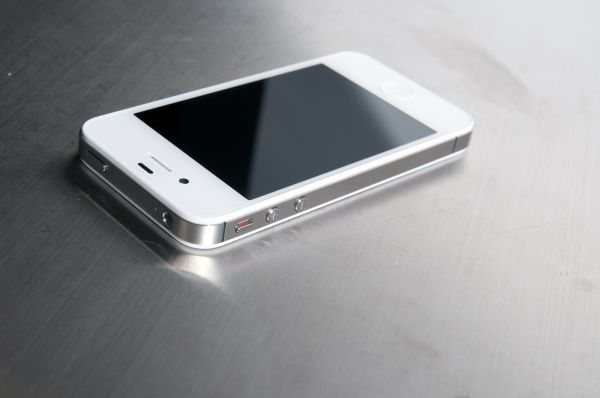

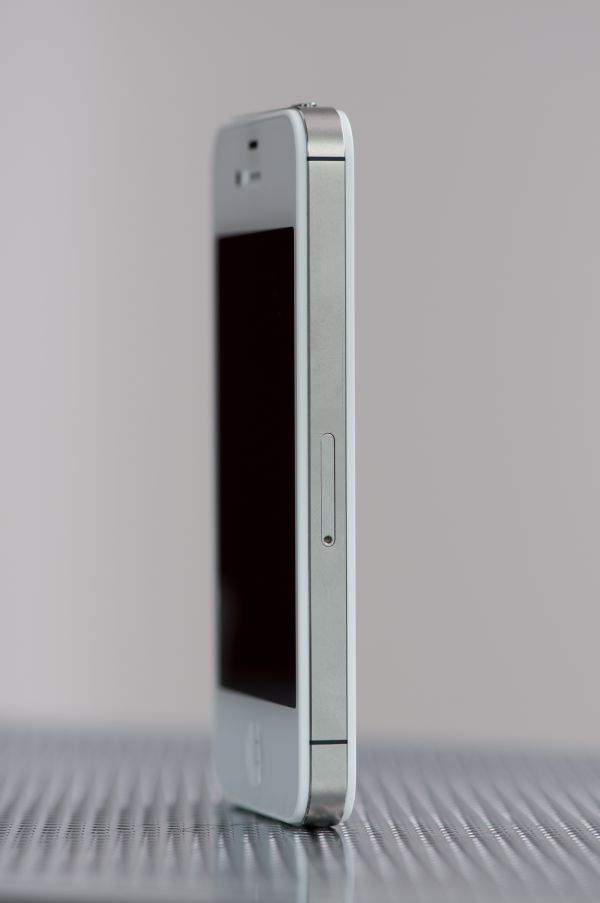














199 Comments
View All Comments
metafor - Tuesday, November 1, 2011 - link
When you say power efficiency, don't you mean perf/W?I agree that perf/W varies depending on the workload, exactly as you explained in the article. However, the perf/W is what makes the difference in terms of total energy used.
It has nothing to do with race-to-sleep.
That is to say, if CPU B takes longer to go to sleep but it had been better perf/W, it would take less power. In fact, I think this was what you demonstrated with your second example :)
The total energy consumption is directly related to how power-efficient a CPU is. Whether it's a slow processor that runs for a long time or a fast processor that runs for a short amount of time; whichever one can process more instructions per second vs joules per second wins.
Or, when you take seconds out of the equations, whichever can process more instructions/joule wins.
Now, I assume you got this idea from one of Intel's people. The thing their marketing team usually forgets to mention is that when they say race-to-sleep is more power efficient, they're not talking about the processor, they're talking about the *system*.
Take the example of a high-performance server. The DRAM array and storage can easily make up 40-50% of the total system power consumption.
Let's then say we had two hypothetical CPU's with different efficiencies. CPU A being faster but less power efficient and CPU B being slower but more power efficient.
The total power draw of DRAM and the rest of the system remains the same. And on top of that, the DRAM and storage can be shut down once the CPU is done with its processing job but must remain active (DRAM refreshed, storage controllers powered) while the CPU is active.
In this scenario, even if CPU A draws more power processing the job compared to CPU B, the system with CPU B has to keep the DRAM and storage systems powered for longer. Thus, under the right circumstances, the system containing CPU A actually uses less overall power because it keeps those power-hungry subsystems active for a shorter amount of time.
However, how well this scenario translates into a smartphone system, I can't say. I suspect not as well.
Anand Lal Shimpi - Tuesday, November 1, 2011 - link
I believe we're talking about the same thing here :)The basic premise is that you're able to guarantee similar battery life, even if you double core count and move to a power hungry OoO architecture without a die shrink. If your performance gains allow your CPU/SoC to remain in an ultra low power idle state for longer during those workloads, the theoretically more power hungry architecture can come out equal or ahead in some cases.
You are also right about platform power consumption as a whole coming into play. Although with the shift from LPDDR1 to LPDDR2, an increase in effective bandwidth and a number of other changes it's difficult to deal with them independently.
Take care,
Anand
metafor - Tuesday, November 1, 2011 - link
"If your performance gains allow your CPU/SoC to remain in an ultra low power idle state for longer during those workloads, the theoretically more power hungry architecture can come out equal or ahead in some cases."Not exactly :) The OoOE architecture has to perform more tasks per joule. That is, it has to have better perf/W. If it had worse perf/W, it doesn't matter how much longer it remains idle compared to the slower processor. It will still use more net energy.
It's total platform power that may see savings, despite a less power-efficient and more power-hungry CPU. That's why I suspect that this "race to sleep" situation won't translate to the smartphone system.
The entire crux relies on the fact that although the CPU itself uses more power per task, it saves power by allowing the rest of the system to go to sleep faster.
But smartphone subsystems aren't that power hungry, and CPU power consumption generally increases with the *square* of performance. (Generally, this wasn't the case of A8 -> A9 but you can bet it's the case to A9 -> A15).
If the increase in CPU power per task is greater than the savings of having the rest of the system active for shorter amounts of time, it will still be a net loss in power efficiency.
Put it another way. A9 may be a general power gain over A8, but don't expect A15 to be so compared to A9, no matter how fast it finishes a task :)
doobydoo - Tuesday, November 1, 2011 - link
You are both correct, and you are also both wrong.Metafor is correct because any chip, given a set number of tasks to do over a fixed number of seconds, regardless of how much faster it can perform, will consume more energy than an equally power efficient but slower chip. In other words, being able to go to sleep quicker never means a chip becomes more power efficient than it was before. It actually becomes less.
This is easily logically provable by splitting the energy into two sections. If 2 chips are both equally power efficient (as in they can both perform the same number of 'tasks' per W), if one is twice as fast, it will consume twice the energy during that time, but complete in half the time, so that element will ALWAYS be equal in both chips. However, the chip which finished sooner will then have to be idle for LONGER because it finished quicker, so the idle expense of energy will always be higher for the faster chip. This assumes, as I said, that the idle power draw of both chips being equal.
Anand is correct, because if you DO have a more power efficient chip with a higher maximum wattage consumption, race to sleep is the OFTEN (assuming reasonable idle times) the reason it can actually use less power. Consider 2 chips, one which consumes 1.3 W per second (max) and can carry out '2' tasks per second. A second chip consumes 1 W per second (max), and can carry out '1' task per second (so is less power efficient). Now consider a world without race-to-sleep. To carry out '10' tasks over a 10 second period, Chip one would take 5 seconds, but would remain on full power for the full 10 seconds, thereby using 13W. Chip two would take 10 seconds, and would use a total of 10W over that period. Thus, the more power efficient chip actually proved less power efficient.
Now if we factor in race-to-sleep, the first chip can use 1.3 for the first 5 seconds, then go down to 0.05 for the last 5. Consuming 6.75W. The second chip would still consume the same 10W.
Conclusion:
If the chip is not more power effficient, it can never consume less energy, with or without race-to-sleep. If the chip IS more power efficient, but doesn't have the sleep facility, it may not use less energy in all scenarios.
In other words, for a higher powered chip to reduce energy in ALL situations, it needs to a) be more power efficient fundamentally, and b) it needs to be able to sleep (race-to-sleep).
djboxbaba - Monday, October 31, 2011 - link
Well done on the review Brian and Anand, excellent job as always. I was resisting the urge to tweet you about the eta of the review, and of course I end up doing it the same day as your release the review :).Mitch89 - Monday, October 31, 2011 - link
"This same confidence continues with the 4S, which is in practice completely usable without a case, unlike the GSM/UMTS iPhone 4. "Everytime I read something like this, I can't help but compare it to my experience with iPhone 4 reception, which was never a problem. I'm on a very good network here in Australia (Telstra), and never did I have any issues with reception when using the phone naked. Calls in lifts? No problem. Way outside the suburbs and cities? Signal all the way.
I never found the iPhone 4 to be any worse than other phones when I used it on a crappy network either.
Worth noting, battery life is noticeably better on a strong network too...
wonderfield - Tuesday, November 1, 2011 - link
Same here. It's certainly possible to "death grip" the GSM iPhone 4 to the point where it's rendered unusable, but this certainly isn't the typical use case. For Brian to make the (sideways) claim that the 4 is unusable without a case is fairly disingenuous. Certainly handedness has an impact here, but considering 70-90% of the world is right-handed, it's safe to assume that 70-90% of the world's population will have few to no issues with the iPhone 4, given it's being used in an area with ample wireless coverage.doobydoo - Tuesday, November 1, 2011 - link
I agree with both of these. I am in a major capital city which may make a difference, but no amount or technique of gripping my iPhone 4 ever caused dropped calls or stopped it working.Very much an over-stated issue in the press, I think
ados_cz - Tuesday, November 1, 2011 - link
It was not over-stated at all and the argument that most people are right handed does not hold a ground. I live in a small town in Scotland and my usual signal strength is like 2-3 bars. If browsing on net on 3G without case and holding the iPhone 4 naturaly with left hand (using the right hand for touch commands ) I loose signal completely.doobydoo - Tuesday, November 1, 2011 - link
Well the majority of people don't lose signal.I have hundreds of friends who have iPhone 4's who've never had any issue with signal loss at all.
The point is you DON'T have to be 'right handed' for them to work, I have left handed friends who also have no issues.
You're the exception, rather than the rule - which is why the issue was overstated.
For what it's worth, I don't believe you anyway.